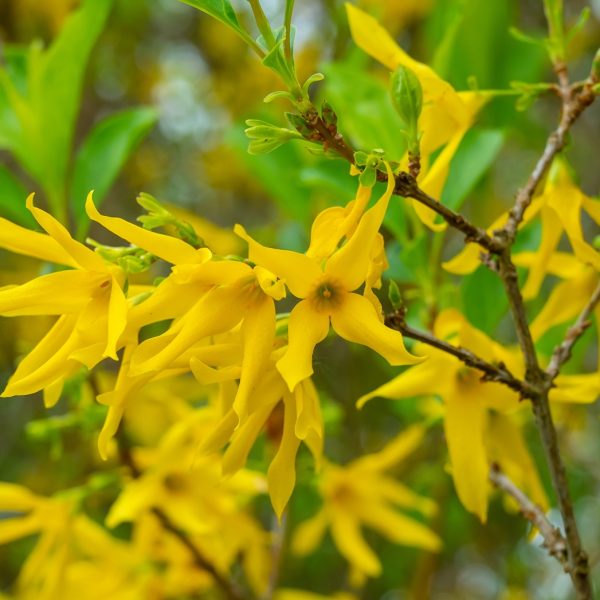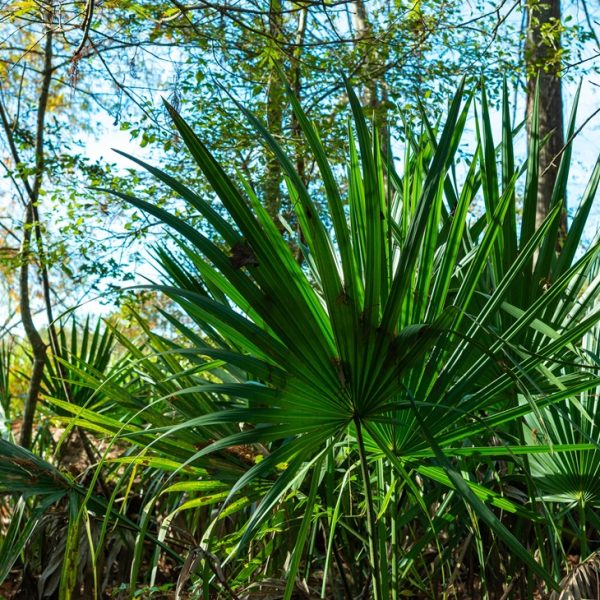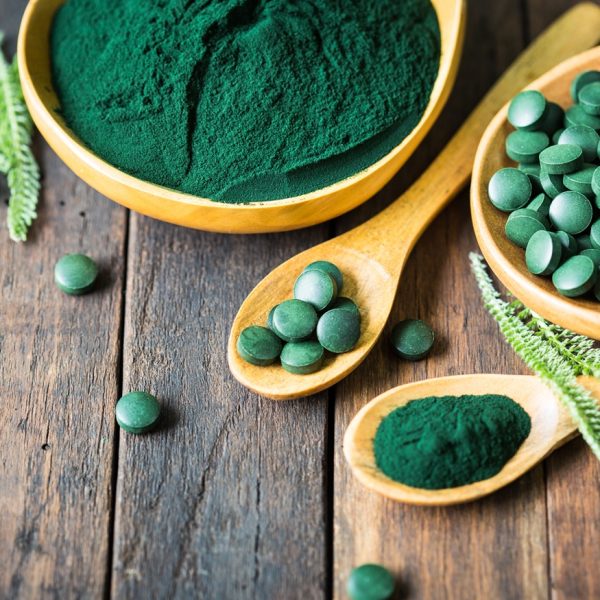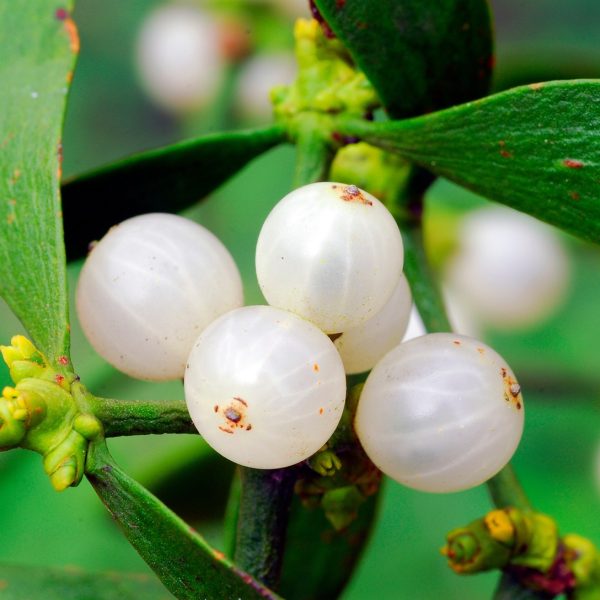What does gender affirming hormone therapy involve, what are the risks and how can trans and non-binary individuals choosing to take hormones be supported by herbal care?

Gender affirming hormone therapy (GAHT) is the medical terminology for trans people making their secondary sex characteristics more gender congruent using exogenous hormones and hormone-affecting medications. It has also been called hormone replacement therapy (HRT), and is in substance and purpose not much different from other types of hormone replacement therapies — such as for those experiencing menopause, low testosterone, adolescence with precocious or delayed periods, or unusually high or low levels of sex hormones for varying reasons.
There’s a history of medicalisation of trans people, and a lot of focus is placed on GAHT as an essential part of the trans experience. Many people who are trans do not choose to change their physiology at all, and hormone therapy is not a prerequisite for trans identity. Many trans people will also modify their bodies or hormone levels outside of the medical system, by sourcing hormones themselves, using hormonally-active plant medicines, through the use of body-modifying clothing, through physical activity like weight-lifting or yoga, or through a myriad of other DIY approaches.
Where do herbs come into the picture with hormone therapy? GAHT is usually very well tolerated, and most trans people who choose to do Gender affirming hormone therapy will not require complementary therapy, but it can be a useful support for some. This article will build an understanding of the safety, risks and side effects that can be associated with GAHT and offer some supportive herbal and holistic strategies.
In the colonised world, trans people have been persecuted and erased for centuries and continue to be vulnerable to political and physical violence today. In the US, the trans community is being aggressively and cruelly targeted by politicians seeking excuses to strip people of civil liberties, and the UK doesn’t seem far behind after the Supreme Court issued a decision reducing legal protections and rights for trans people. Professional bodies, practitioners and communities that will take a stand to protect trans people’s rights and offer supportive care are more important than ever. I hope this article is a brick in the hands of those building places of care, or of those resisting violence in other ways.
Gender affirming hormone therapy safety: Understanding risks
I always like to begin a discussion about clinical side-effects of Gender affirming hormone therapy with the unambiguous assertion that hormone therapy is safe (1). Most hormone therapy drugs provided by prescribers are bioidentical hormones that already exist in concentration in our bodies. Those that are not, such as the drug spironolactone, tend to be used ubiquitously around the world (‘spiro’ is included on the WHO’s model list of essential medicines) (2). Hormone therapy is widely prescribed in cisgender patients without a lot of handwringing about the side effects, while scrutiny is directed when the very same drugs are utilised by trans people. Most people who undergo hormone therapy will experience only minor side effects, if any.

This is critical to name in the face of growing politicisation of research designed to make gender-affirming care for trans people impossible to access through conventional channels, part of a bigger project of violence and marginalisation directed at trans people in many industrialised countries, including England and the US. Publications, such as the oft-cited Cass Review, utilise improper research methods and skew data in order to create an illusion of scientific credibility to justify antitrans legal and medical policies (3,4). In the face of this intentional attack on accurate information, I want to underscore the unassailable safety of these therapies.
Of the specific risks that have been raised about GAHT, most are at present unsubstantiated by significant data. There is insufficient evidence to demonstrate an increased risk of diabetes, high incidence of hormone dependent cancers, or any pattern of adverse impacts on liver health (5,6,7). Additionally, while oestrogen therapy may carry some small risk of cardiovascular incidents, there is no evidence at all that testosterone is linked with cardiovascular disease (CVD). Generally, the alleviation of stress from accessing gender-affirming health care and the resultant reduction in dysphoria, social stress and violence is correlated with a reduction in all of these risk vectors (5). More so, the narrative that there are high levels of regret associated with GAHT is a political fiction; GAHT has some of the lowest levels of medical regret of any medical therapy, and is almost universally met with improvements in mood, mental state and quality of life (1). Trust trans people who say they need GAHT.
All that said, there is much room for improvement in what we know about the efficacy, levels of satisfaction, and varying side effects experienced with hormone therapies. There is disappointingly little useful research on the relative merits of different hormone protocols, specific risk levels and comorbidities, and the degree to which existing protocols meet desired outcomes. In the US, research has long been stymied by social structures in academia which deprioritise trans researchers, and even that flawed situation is deteriorating with the ongoing ravaging of medical and social science underway and the blanket censorship of gender-related research. The huge gap in research is filled in by community-sourced knowledge, spread through various internet communities and person-to-person.
What is abundantly clear is that delay and denial of GAHT and threats to access to care have considerable effects on mental health for many trans people. Access to quality care needs to be improved in almost every context. In the UK, the NHS requirement to get care through a gender clinic can cause delays of years to access GAHT or other gender-affirming care — many who can afford to must resort to private-payer care (8). In the US, GAHT is more readily available in many locales, though there are still many obstacles — including lack of insurance, lack of qualified providers, increasing legal restrictions on care, and provider gatekeeping (9).
GAHT protocols
Let’s dive into some of the protocols that are used in Gender affirming hormone therapy. First, it’s important to note that, just as not all trans people want to modify their bodies at all, people may come to hormone therapy with different goals, and the specific protocol that’s used will vary based on these desires as well as the nuances of our individual bodies.

The World Professional Association for Transgender Health (WPATH) recommends a variety of protocols for trans women, trans men, and non-binary trans individuals. Most protocols for trans women involve some combination of oestrogen therapy and/or androgen suppression, and may include progesterone supplementation; and for trans men, usually testosterone supplementation. Protocols for non-binary people may follow along the same lines, again based on individual goals (1).
The most common drugs used in Gender affirming hormone therapy are:
- Testosterone enanthate or cypionate, administered by injection weekly, testosterone undecanoate administered by injection approximately every three months, or transdermally through a patch or gel. (Usually just called ‘T’)
- Estradiol valerate or cypionate, administered by injection on varying schedules, or 17-ß-estradiol administered orally or buccally, or transdermally through a patch or gel.
- Spironolactone tablets, taken daily as an anti-androgen in those with testes (primarily prescribed in the US).
- Finasteride, an anti-androgen used as an adjunct, to modulate effects of hormones.
- Various progestins, such as medroxyprogesterone, micronised progesterone or cyproterone acetate (which is also used as an anti-androgen).
- Leuprolide acetate or histerelin acetate, GnRH agonists that reduces endogenous sex hormone production in the testes or ovaries
For delaying puberty in youth, typical protocols focus on reducing endogenous sex hormones with leuprolide or other GnRH agonists and/or use of progestins to suppress menstruation, at the point where puberty-related development begins and up until testosterone or oestrogen therapy is an option. This approach temporarily and reversibly delays development of secondary sex characteristics associated with puberty. Use of puberty-blockers is highly recommended by WPATH, the Endocrine Society, and nearly every professional body specialising in caring for trans adolescents, contrary to the attacks by anti-trans activists. Data on improvements of mental state and self-esteem for trans youth able to access GAHT is unambiguous (10).
While naming these standard protocols, it’s also worth noting that many trans people will get their Gender affirming hormone therapy drugs through non-prescription channels — from community, or purchased off the internet, for instance — and may be supplementing with herbs that have hormone-modulating effects (11,12). There are strong DIY and peer-support tendencies in trans communities, by necessity for our survival and well-being, and many people’s hormone regimens may vary widely or be inconsistent. Other drugs incorporated in protocols may include estradiol enanthate or hormonal birth control formulations, or legacy estrogen preparations such as conjugated equine estrogen (Premarin) or ethyinlestradiol.
Managing common GAHT side effects with herbs
Clinically, there are characteristic side effects that occur for some people upon initiating hormone therapy, many of which can be improved with supportive herbs. Many herbal clients also harbor concerns about the long-term impacts of a drug regimen they may continue for decades, and where potential risks exist, there are options for herbal and holistic support for affected systems.
Testosterone
Most of the Gender affirming hormone therapy side effects I’ve seen in clinic are caused by testosterone, and most are mild and transient. These include acne, hair loss, vaginal dryness or itchiness, and changes to emotional patterns. Some of these symptoms level out quickly, while others may take longer to present (1).

Acne
Many taking testosterone will experience facial acne for the first half year or so of treatment. This acne is akin to what is experienced by many with increasing levels of testosterone in early adolescence. Acne is typically caused by a combination of increased sebum production, dead skin cells and dirt trapping that oil, and resultant bacterial infection. Inflammatory oils and the elimination of other bodily wastes through pores in the face may also contribute, and the liver and lymphatic systems are implicated due to their roles in moving and managing wastes and lipids (13).
A standard acne protocol will often produce significant improvement — topical use of anti-inflammatories such as black seed (Nigella sativa) or chamomile (Matricaria recutita) and antimicrobials such as calendula (Calendula officinalis) or Oregon grape root (Berberis aquifolium) will go a long way. Herbs can be prepared as a tea or tincture used as a wash, or as an oil applied after cleansing the skin with gentle soap or witch hazel (Hamamelis virginiana). Pay attention to the underlying tendency of the skin towards dryness or oiliness and make sure the topicals are not aggravating that balance; those with oily skin should make more use of astringent herbs like witch hazel or calendula, while those with dryer skin should lean into use of anti-inflammatory oils like black seed. Topical herbs should be used daily at a minimum if possible.
Internally, bitter and lymphatic herbs may be helpful in strengthening other organs of elimination and taking some stress off the skin. Oregon grape also functions here as a bitter hepatic tonic, and other bitter herbs may be helpful here as well, such as artichoke (Cynara scolymus), burdock (Arctium lappa) or dandelion (Taraxacum officinale). Calendula has a dual therapeutic approach in also increasing movement of lymph; other lymphatics I like for acne are violet (Viola odorata) and self-heal (Prunella vulgaris).
Acne can also be mitigated by avoiding highly-processed convenience foods that contain high quantities of sugar or low-quality oils, and employing oils like coconut, extra-virgin olive, safflower or avocado in cooking, and possibly by reducing consumption of dairy (14).
Hair loss
A big concern many people taking testosterone hold is potential baldness, or androgenic alopecia, especially for those who have relatives with hair loss. The causes of hair loss are multifactorial, and likely involve restricted circulation and increased oxidative stress to hair follicles, both caused in part by high levels of dihydrotestosterone (DHT) in the scalp tissues (15,16). Testosterone is converted to DHT by the 5α-reductase enzyme, and a standard treatment for hair loss from testosterone is finasteride, a drug which inhibits this enzyme (1).
Preventative supports should be two-fold — attempting to reduce 5α-reductase in general or in the scalp specifically, and supporting the follicles in the scalp and the structures of the hair itself. One of my favorite herbal approaches here is a hair rinse, with a combination of rosemary (Rosmarinus officinalis) or yarrow (Achillea millefolium) to stimulate circulation and as antioxidants, nettle seed (Urtica dioica) to reduce the impact of DHT, and horsetail (Equisetum arvensis) to help supply silica to support the fibres of the hair (17,18). These herbs can be infused in apple cider vinegar and applied to the scalp in the shower or bath (I use a spray bottle; a ketchup bottle with a small nozzle would be a good option too). Saw palmetto (Serenoa repens) is another herb understood to reduce DHT, and which has been shown in some instances to help with hair loss, used in a rinse or taken in capsule form (19). (Note that lowering DHT levels with either finasteride or with herbs may also impact some of the other masculinising effects of testosterone — everyone’s body responds to hormones differently and results are unpredictable.)
Changes to emotional experience and expression
Changes in levels of sex hormones are almost universally accompanied by shifts in our emotional experience of the world. These will be very individual, person to person. One experience some describe when starting to take testosterone is increasing flares of spiking anger. Another common feeling is that emotions are bottled up and there’s no release valve, or having difficulty crying. When these emotional shifts are undesirable or unpleasant, herbal allies for emotional softening, cooling, and letting the tears flow can be helpful. Everyone has their favorites; some of mine are violets (Viola odorata, V. sororia or V. trifolium), anise hyssop (Agastache foeniculum) and blue vervain (Verbena hastata); and for cooling, nettle leaf (Urtica dioica) or dandelion root (Taraxacum officinale). Picking the right nervine (relaxing) herb can be a very individual choice.
The T drop
While initial emotional shifts tend to stabilise after the first half year or so, another common emotional rough spot associated with testosterone is the so-called T-drop. Because T is usually administered through weekly injections, testosterone levels are lowest in the last 24 hours before your shot. Some describe fatigue, irritability or depression during this time. Schisandra berries (Schisandra chinensis) have been demonstrated clinically to counteract this effect, by possible mechanism of slowing hepatic metabolism of testosterone (20).

Vaginal dryness, atrophy and yeast infections
Another common clinic complaint from those taking testosterone is vaginal itching or dryness. This is similar to the experience of many experiencing menopause, where hormonal changes can affect pelvic circulation, mucosal tissue tone and vaginal flora. Dryness can be simply a change in mucosal secretion, or may reflect a larger atrophy of the mucosal tissue. Dryness may lead to pruritus, or itching may be a product of vulvovaginal candidiasis (yeast infections), which can be more common for some people after taking T for many months or years (1,21). N.B. It can also be important to rule out BV or STIs here.
To help reduce itchiness, it can first be important to identify whether yeast is to blame — aside from itching, symptoms of a candida overgrowth could include unusual discharge or odour, redness, pain in urination or from stimulation, and a yeast infection can be confirmed by a medical provider. Standard approaches to yeast infections apply here, including any combination of:
- Topical use of yogurt with live cultures as a probiotic to balance vaginal flora (22)
- A whole peeled clove of garlic (Allium sativum) wrapped in gauze, or boric acid capsules, used nightly as antifungal suppositories for two weeks (22)
- Soaking (in a small tub or sitz bath) with a tea made from chamomile (Matricaria recutita), calendula (Calendula officinalis), black walnut hulls (Juglans nigra), lady’s mantle (Alchemilla vulgaris, though you may wish to use a less-gendered common name, like lion’s hooks), Oregon grape root (Mahonia aquifolium), marshmallow leaf or root (Althaea officinalis) or other herbs to soothe itching and reduce fungal overgrowth (22)
- Taking garlic, black walnut, cardamom (Eletteria cardamomum), Oregon grape root or other antifungal herbs in tea or tincture or added to food
- Reducing sugar intake, especially sugars from fruits and high fructose corn syrup (23)
To help alleviate overall dryness or atrophy, employ a combination of topical emollient herbs, teas of starchy demulcents, and improve pelvic circulation. A favourite emollient preparation is coconut oil suppositories incorporating sustainably-sourced (owing to threats to wild populations) powdered slippery elm bark (Ulmus rubra) or, preferably, marshmallow root (Althaea officinalis) and vitamin E drops, and used twice daily. Soaks using these herbs are another option, and they can also be consumed in tea or cold infusion. Dietary essential fatty acids like salmon, flax seeds or dark leafy greens may also help with vaginal tissue integrity (22).
Supporting pelvic circulation can help nourish the vaginal tissue better, increasing tone and secretion. This can be achieved with pelvic floor exercises (or “Kegels”), and circulation-supporting herbs like yarrow, which can be added to the above suppositories or soaks (23).
Injection site inflammation
Testosterone is typically administered through injection, and some people taking it this way may have inflammatory reactions around the injection site. This can include itching, irritation or pain, usually on the skin and sometimes deeper in the tissue, and is often a reaction to the carrier oil used in compounding the testosterone. For superficial reactions, a topical wash or soak of chamomile or calendula should be helpful. In instances of deeper, longer-lasting pain, herbs will probably not be able to help, and some troubleshooting around preparation or injection technique may be needed.
Polycythemia
A rare but potentially serious side effect of testosterone is polycythemia or secondary erythrocytosis, where an increase in erythropoietin causes the body to produce too much hematocrit. This condition is usually identified through blood tests, as symptoms tend to only emerge in severe cases (24). Polycythemia is outside the scope of herbal support and is usually managed through therapeutic phlebotomy or blood donation.
Herbs to avoid in combination with testosterone
There are no herbs that are red flags to avoid with testosterone. Other than reports from a patient in clinic that felt that milk thistle (Silybum marianum) reduced the effects of his testosterone, I have not observed clinical interactions between testosterone and herbs. Nonetheless, interactions could theoretically exist, and some categories of herbs should be used mindfully:
- Herbs that may speed hepatic clearance of testosterone, such as those that may induce CYP2C9, 2C19, 2D6, 3A4 or 3A5 — e.g. St John’s wort (Hypericum perforatum), red sage (Salvia miltiorrhiza); or may otherwise decrease testosterone levels — e.g. spearmint (Mentha spicata), liquorice (Glycyrrhiza glabra)
- Herbs that may stimulate oestrogen receptors, containing isoflavones like genistein or daidzein — e.g. soy, liquorice; coumestins like coumestrol — e.g. alfalfa (Medicago sativa); or lignans such as secoisolariciresinol — e.g. flax Linum usitatissimum.
- Herbs that may inhibit 5α-reductase and affect production of DHT — e.g. saw palmetto (Serenoa repens), nettle (Urtica dioica) or reishi (Ganoderma lucidum).

Oestradiol
Oestradiol use does not typically cause many side effects, though there are some more serious risks associated with it, particularly the possibility of slightly-elevated risk of dangerous blood clots known as thromboembolisms (1,25). Let’s start there, and then discuss some of the less significant side effects that sometimes present.
Oestrogen administration in every form has long been associated with risk of cardiovascular events, including with hormonal birth control and menopause-related hormone replacement therapy (26). Many studies have focused on understanding the risk posed by gender affirming use of oestrogen, and while early studies highlighted increased cases of deep vein thrombosis (clots in the leg muscles), pulmonary embolism (clots affecting the lungs) or stroke (clots affecting the brain), more recent studies have suggested that the risk is less significant than originally suspected and may not be relevant to most trans oestrogen users. Elevated risk seems to be of particular concern for those taking ethinylestradiol or conjugated equine oestradiol, neither of which are currently prescribed. The latest WPATH standards of care also recommend people over 40 use transdermal rather than oral forms of oestrogen (1).
While risk levels for those using transdermal, injection or 17-ß-oestradiol seems to be particularly low, some people may wish to provide extra antithrombotic support for their cardiovascular system out of an abundance of caution, especially those with elevated cardiac risk, like those with prior events, strong family history of CVD, or limited mobility. Herbs and foods rich in flavonoids, such as most dark berries and many other fruits and vegetables, have antiplatelet activity that may be supportive at preventing dangerous clotting over the long term. Other herbs known for antithrombotic effects are ginger (Zingiber officinale), garlic (Allium sativum), hawthorn (Crataegus spp.) and horse chestnut (Aesculus hippocastanum). Regular, moderate exercise and movement are also preventative (13,27,28,29,30).
Smoking cessation
Concurrent use of tobacco or other nicotine products and oestrogens may elevate the risk of blood clots. For those looking to improve their cardiovascular health and lower long-term risks, cutting back on tobacco use or quitting entirely is one possible step. Approaches to reducing tobacco use are more than we have space to discuss here, but herbal supports, including lobelia (Lobelia inflata), skullcap (Scutellaria lateriflora), oatstraw (Avena sativa) and pasqueflower (Anemone pulsatilla), can be very helpful for some.
Emotional support
Similar to those starting on testosterone, coming into an emotional landscape coloured by oestrogen can be disorienting. Some may experience strong emotional reactions of grief, sadness or anxiety. For those who find these reactions to be overwhelming or unpleasant, herbs can be a stabilising comfort. Some that I like to recommend here are lemon balm (Melissa officinalis), hawthorn berry (Crataegus spp.), and betony (Stachys officinalis).
Low libido/erectile issues
Ostrogen therapy (and lowering testosterone in general) can change sexual experience and sometimes make it difficult to get an erection. Some may welcome these changes, while for some it may be unpleasant or problematic. Medical providers may prescribe sildenafil (viagra) to help with erections (21). Please note that many of the herbs often recommended for erectile dysfunction (including puncture tree vine (Tribulus terrestris), maca (Lepidium meyenii) or horny goat weed (Epimedium spp.) may increase testosterone production in those with testes.
Injection site issues
Those using injection oestradiol may experience reactions around the site of injection. The above notes for testosterone users are applicable here as well.
Herbs to avoid in combination with ostrogen
I have not observed negative clinical drug–herb interactions with oestrogen. Three categories of herbs which may theoretically produce interactions with oestrogen are:
- Herbs that may induce CYP1A2 and 3A4 and increase the body’s clearance of oestrogen, such as St John’s wort (Hypericum perforatum) or schisandra (Schisandra chinensis)
- Herbs known to increase testosterone, such as tribulus (Tribulus terrestris) or maca (Lepidium meyenii) as mentioned above, fenugreek (Trigonella foenum-graecum), ginseng (Panax ginseng or P. quinquefolium), false unicorn (Chamaelirium luteum) or pine pollen (Pinus spp.)
- The same list of herbs listed for testosterone that contain isoflavones, lignans or coumestrins, which may compete with pharmaceutical oestrogen at receptor sites
It’s highly uncertain which of these herbs, if any, may interfere with the effects of exogenous oestrogen. The impact of the last category — ‘oestrogenic’ herbs and foods — is especially highly debated. From my experience, the use of these herbs concurrently with pharmaceutical oestrogen has noticeable benefits, such as softening some of the ups-and-downs of varying oestrogen levels, and providing a softer feminine energy, but at the moment the data is inadequate to give us concrete answers.

Spironolactone
Spironolactone is widely used, but for some it is associated with some of the least tolerated side-effects. I have known more people to stop using spiro than any other Gender affirming hormone therapy pharmaceutical, and the internet is awash in complaints and criticisms. Still, others take spiro with no unpleasant side effects. Spiro is a hypotensive diuretic and aldosterone-receptor antagonist and can have profound drying effects across the body in addition to lowering blood pressure to sometimes dangerous levels. These effects are likely to blame for most of the unpleasant impacts of the drug.
Gastrointestinal secretion and bleeding
Spiro can significantly reduce secretions throughout the digestive tract, and particularly in the stomach and oesophagus. Dryness and low secretions can cause oesophageal bleeding (31), as well as downstream digestive effects such as GERD and leaky gut syndrome. I recommend that most people taking spiro use moistening herbs to help counteract dryness, especially marshmallow (Althaea officinale), and liquorice (Glycyrrhiza glabra). These can help lubricate the alimentary canal and protect against bleeding or damage to the mucus membranes (13). Herbs which increase digestive secretions, like orange peel (Citrus spp.) or artichoke (Cynara scolymus) can also protect the oesophagus and support satisfying digestion. If gastrointestinal (GI) effects have already reached a point where pain or bleeding is occurring, herbs which can heal the tissue of the esophagus may be needed; calendula (Calendula officinalis) is a great choice.
Hypotension
As noted, spironolactone is used medically for lowering blood pressure. Since not every person using spiro for Gender affirming hormone therapy has high blood pressure to begin with, some may experience low blood pressure, which can manifest as dizziness or lightheaded feelings. Liquorice (Glycyrrhiza glabra) can have an opposite effect of increasing blood pressure, and in fact has been shown in some studies to counteract the hypotensive effects of spiro (32). Drinking more water and increasing salt intake may also help improve blood pressure.
Brain fog and depression
One common effect of spiro is foggy-headedness and overall stormy feelings and depression. This is often the most unbearable aspect of taking spiro and the reason many people discontinue use. It’s unclear whether this is caused by low blood pressure or some other mechanism. It’s possible that uplifting, aromatic herbs may be helpful, such as tulsi (Ocimum sanctum), lemon balm (Melissa officinalis), rosemary (Rosmarinus officinalis) or anise hyssop (Agastache foeniculum), but the effects are not well-demonstrated.
Libido
See above note about oestrogen use.
Hyperkalemia
One potential and serious side-effect of spironolactone is hyperkalemia, a dangerous build-up of potassium levels. Those taking spiro under medical supervision are usually monitored for increasing levels of potassium, and diagnosis is usually made through this lab work. Once symptoms emerge, the condition is dangerous and emergency medical intervention is usually needed.
Herbs to avoid in combination with spironolactone
Herbs which may have relevant interactions with spirolactone fall into three main categories:
- Hypotensive herbs, which may exacerbate the hypotensive effects of spiro. These include garlic (Allium sativum), limeflower (Tilia spp.), ashwagandha (Withania somnifera), Jamaican dogwood (Piscidia piscipula) and motherwort (Leonurus cardiaca)
- Drying and diuretic herbs, such as alfalfa (Medicago sativa), dandelion leaf (Taraxacum officinale), or especially nettle (Urtica dioica), which is also potassium-sparing and could increase risk of hyperkalemia
- Herbs which may increase testosterone levels and counteract the effects of spiro (see list under the section on herbs to avoid in combination with oestrogen)
Lack of data on puberty blockers
GnRH agonists and other puberty blockers may cause a range of short-term side-effects. Long-term effects are less established, though it’s recommended that teens take additional steps to support bone development, with a focus on nutrition and exercise. Those using puberty blockers may experience long-term loss of fertility, though at this point there is insufficient data (1). My personal clinical work has primarily served adult clients, and I can’t speak to the use of herbs to support adolescents using puberty blockers.
Conclusions
Much of the information discussed in this article is constantly evolving. Standards of care are changing, improving and expanding . The cultural understandings around gender are ever shifting, stirred by liberation struggles, the internet, generational succession and the influence of many overlapping cultures. Please take this as a starting place in an understanding of how to offer herbal care to people engaging with hormones for gender-affirming purposes. Listen to your patients and their experiences, desires and self-understandings, and find ways to let your work align with the playful spirit of gender.
References
- Coleman E, Radix AE, Bouman WP, et al. Standards of Care for the Health of Transgender and Gender Diverse People, Version 8. International Journal of Transgender Health. 2022;23(sup1):S1-S259. https://doi.org/10.1080/26895269.2022.2100644
- World Health Organization. WHO Model List of Essential Medicines – 23rd List (2023).; 2023. https://iris.who.int/bitstream/handle/10665/371090/WHO-MHP-HPS-EML-2023.02-eng.pdf
- McNamara M MD MSc. An Evidence-Based Critique of the Cass Review.; 2024. https://law.yale.edu/sites/default/files/documents/integrity-project_cass-response.pdf
- Pearce R PhD. What’s wrong with the Cass Review? A round-up of commentary and evidence. Published March 10, 2025. https://ruthpearce.net/2024/04/16/whats-wrong-with-the-cass-review-a-round-up-of-commentary-and-evidence/
- Glintborg D, Christensen LL, Andersen MS. Transgender healthcare: metabolic outcomes and cardiovascular risk. Diabetologia. 2024;67(11):2393-2403. https://doi.org/10.1007/s00125-024-06212-6
- Berner AM, Atkinson SE. The implications of hormone treatment for cancer risk, screening and treatment in transgender individuals. Best Practice & Research Clinical Endocrinology & Metabolism. 2024;38(5). https://doi.org/10.1016/j.beem.2024.101909
- Hashemi L, Zhang Q, Getahun D, et al. Longitudinal Changes in Liver Enzyme Levels Among Transgender People Receiving Gender Affirming Hormone Therapy. J Sex Med. 2021;18(9):1662-1675. https://doi.org/10.1016/j.jsxm.2021.06.011
- Cole BMC& H. Transgender patients could face years-long wait for NHS treatment. Published March 20, 2024. https://www.bbc.com/news/uk-68602939
- Puckett JA, Cleary P, Rossman K, Newcomb ME, Mustanski B. Barriers to Gender-Affirming Care for Transgender and Gender Nonconforming Individuals. Sex Res Social Policy. 2018;15(1):48-59. https://doi.org/10.1007/s13178-017-0295-8
- GLAAD. Medical Association statements in support of health care for transgender people and youth. Published April 2, 2025. https://glaad.org/medical-association-statements-supporting-trans-youth-healthcare-and-against-discriminatory/
- Olansky E, Lee K, Handanagic S, Trujillo L; National HIV Behavioral Surveillance among Transgender Women Study Group; National HIV Behavioral Surveillance Among Transgender Women Study Group. Nonprescription Hormone Use Among Transgender Women – National HIV Behavioral Surveillance Among Transgender Women, Seven Urban Areas, United States, 2019-2020. MMWR Suppl. 2024;73(1):34-39. Published 2024 Jan 25. https://doi.org/10.15585/mmwr.su7301a4
- Orsi CH. Herbal hormone supplements can change the meaning of trans embodiment. https://magazine.catapult.co/culture/stories/clarence-harlan-orsi-herbal-hormone-supplements-gender-transition-trans-embodiment
- Bone K and Mills S. Principles and Practice of Phytotherapy: Modern Herbal Medicine. Elsevier Health Sciences; 2013.
- Acne | Skin | Herbal Reality. Herbal Reality. https://www.herbalreality.com/condition/acne/
- Deng Z, Chen M, Liu F, et al. Androgen Receptor-Mediated Paracrine Signaling Induces Regression of Blood Vessels in the Dermal Papilla in Androgenetic Alopecia. J Invest Dermatol. 2022;142(8):2088-2099.e9. https://doi.org/10.1016/j.jid.2022.01.003
- Meyer‐Gonzalez T, Bacqueville D, Grimalt R, et al. Current controversies in trichology: a European expert consensus statement. Journal of the European Academy of Dermatology and Venereology. 2021;35(S2):3-11. https://doi.org/10.1111/jdv.17601
- Kuhn MA, Winston D. Winston & Kuhn’s Herbal Therapy & Supplements: A Scientific & Traditional Approach. Lippincott Williams & Wilkins
- Pekmezci E, Dündar C, Türkoğlu M. A proprietary herbal extract against hair loss in androgenetic alopecia and telogen effluvium: a placebo-controlled, single-blind, clinical-instrumental study. Acta Dermatovenerologica Alpina Pannonica Et Adriatica. 2018;27(2). https://doi.org/10.15570/actaapa.2018.13
- Wessagowit V, Tangjaturonrusamee C, Kootiratrakarn T, et al. Treatment of male androgenetic alopecia with topical products containing Serenoa repens extract. Australas J Dermatol. 2016;57(3):e76-e82. https://doi.org/10.1111/ajd.12352
- Peters E RHP. Herbs and Hormones: Interactions and Support. Presented at: October 2019; Silver Springs, MD, United States of America.
- Krempasky C NP. Conversation, 2021.
- Romm AJ. Botanical medicine for women’s health. Churchill Livingstone; 2010.
- Vaginal thrush | Reproductive system | Herbal Reality. Herbal Reality. https://www.herbalreality.com/condition/vaginal-thrush/
- Porat AT, Ellwood M, Rodina M, Dianat S. Erythrocytosis in Gender-Affirming Care With Testosterone. Ann Fam Med. 2023;21(5):403-407. https://doi.org/10.1370/afm.3018
- Aranda G, Halperin I, Gomez-Gil E, et al. Cardiovascular risk associated with gender affirming hormone therapy in transgender population. Frontiers in Endocrinology. 2021;12. https://doi.org/10.3389/fendo.2021.718200
- LaVasseur C, Neukam S, Kartika T, Samuelson Bannow B, Shatzel J, DeLoughery TG. Hormonal therapies and venous thrombosis: Considerations for prevention and management. Res Pract Thromb Haemost. 2022;6(6):e12763. Published 2022 Aug 23. https://doi.org/0.1002/rth2.12763
- Olas B. The multifunctionality of berries toward blood platelets and the role of berry phenolics in cardiovascular disorders. Platelets. 2017;28(6):540-549. https://doi.org/10.1080/09537104.2016.1235689
- Subramani B, Sathiyarajeswaran P. Current update on herbal sources of antithrombotic activity-a comprehensive review. Egypt J Intern Med. 2022;34(1):26. https://doi.org/10.1186/s43162-021-00090-9
- 8 things you can do to help prevent blood clots | Kaiser Permanente. Kaiser Permanente. https://healthy.kaiserpermanente.org/health-wellness/health-encyclopedia/he.8-things-you-can-do-to-help-prevent-blood-clots.acf3295
- Wang J, Xiong X, Feng B. Effect of crataegus usage in cardiovascular disease prevention: an evidence-based approach. Evid Based Complement Alternat Med. 2013;2013:149363. https://doi.org/10.1155/2013/149363
- Gulmez SE, Lassen AT, Aalykke C, et al. Spironolactone use and the risk of upper gastrointestinal bleeding: a population-based case-control study. Br J Clin Pharmacol. 2008;66(2):294-299. doi:10.1111/j.1365-2125.2008.03205.x
- Armanini D, Castello R, Scaroni C, et al. Treatment of polycystic ovary syndrome with spironolactone plus licorice. Eur J Obstet Gynecol Reprod Biol. 2007;131(1):61-67. https://doi.org/10.1016/j.ejogrb.2006.10.013


